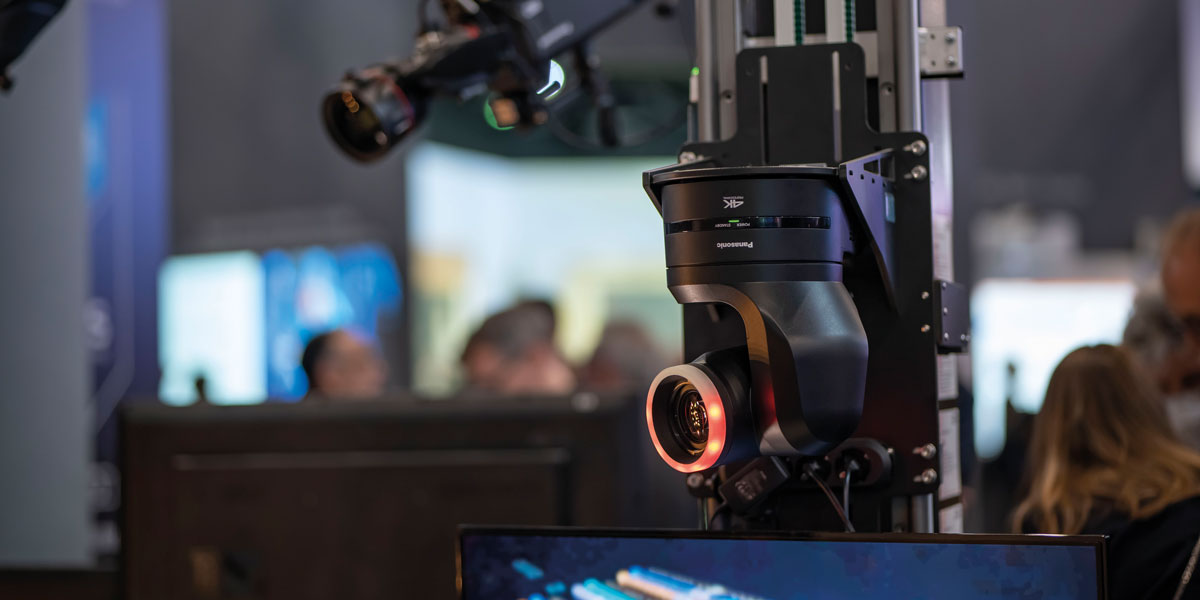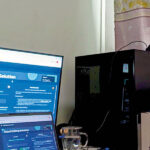Panasonic Connect: A Solution to Every Problem

Posted on Jun 30, 2023 by FEED Staff
Sponsored editorial
Panasonic’s impressive suite of broadcast offerings work to solve issues you didn’t even know you had
Trade shows used to be all about products, with companies saving their latest and greatest innovations for the big show floor unveiling. Nowadays however, it’s all about providing solutions to problems.
According to Guilhem Krier, head of new business and market development at Panasonic Connect Europe, customers at shows like NAB and IBC these days tend to ask: “‘How do I carry out my SDI to IP transition?’ Or: ‘What kind of protocol should I use for my secured streaming needs?’ Accordingly, we have moved from product-centric to more solutions-centric activities at these shows.”
It’s not just M&E customers asking these questions, though.
“During the pandemic, the education and corporate industries needed to transmit information that was only previously conveyed through physical meetings or events,” observes Krier. “All of a sudden, they needed to be able to stream this kind of event.”
The IP transition has also been boosted by remote production, which has become increasingly popular since the onset of Covid-19, while broadcasters in general have been engaged in a shift to an IT-centric infrastructure for some time.
“However, in big existing broadcast facilities, transitioning from SDI to IP takes a long time; it’ll be an ongoing process for the next few years,” says Krier. “It’s going to take much more time in live events. Obviously, in the field, they need to work very fast. The engineers take SDI cables or fibre, plug it into the socket and that’s it. IP could take them more time, and they have to deal with IP addresses. Somehow, these broadcast engineers need to become network technicians.
“But going IP is no longer really a question. It’s going to happen,” adds Krier. “Ultimately, everyone knows we’ll have to go in this direction.”
Protocol power
Panasonic’s solutions-centric approach aims to help people move down that route; standardisation is key. SMPTE’s ST 2110, for example, is being broadly embraced to simplify a ‘glass-to-glass’ workflow for broadcast IP video.
“ST 2110 has been definitively adopted by the broadcast industry, and we hope to extend that to the live and events industry,” says Krier. “It opens a way to do so much more – if the technical knowledge is there.
“NDI is another standard, widely adopted on the corporate side, as well as events,” he continues. “RTMPS is being used for Facebook streaming and is widely used to broadcast events. SRT (secure reliable transport) goes much further in terms of security, not only being able to offer a high level of confidentiality to the stream but also to adapt more efficiently to unreliable networks, securing a good enough link to transmit the video.
“The good news is that there is no more uncertainty, so to speak, in the kind of protocols that are actually going to be used.”
Panasonic is integrating these protocols into its products – such as its market-leading PTZ line. The recently released AW-UE160 is the first ever compact PTZ camera to support ST 2110. It also has integrated support for SRT, NDI 5.5, NDI HX3, FreeD and RTMP/RTMPS. Then there’s the AW-UR100, an IP65-rated outdoor PTZ camera that captures high-precision images in 4K/60p and supports all major SDI interfaces plus SRT, NDI and RTMP.
“These cameras also support PoE++ (power over Ethernet), so a single Cat5 cable can supply power, your data transport, video transport and audio transport – everything in one cable,” explains Krier.
Introducing these cameras into existing systems will be extremely straightforward, offering solutions to applications as diverse as outdoor sports to remote reality shows.
“Having PoE++, ST 2110, NDI, SRT and everything on board in a PTZ will make remote production easier,” says Krier. “Until now this wasn’t managed directly in-camera – there were additional gateways and converters. Now, the idea is to have the best integration possible, so the PTZ can fit into any application or workflow.
“You can have the best camera in the world, but if it’s not going to fit into a customer’s workflow it won’t be selected,” he adds.
Agnostic processing
Panasonic’s focus on solutions is fully responsive to its customers, no matter if they’re transitioning to IP or staying with SDI – or as is likely, engaged in a combination of both. Hence the emergence of the video processing platform Kairos, which offers both baseband signal (12G/3G/HD-SDI, HDMI, Display Port) and IP packet (ST 2110, NDI, RTP) inputs and outputs, to connect to a diverse array of components on the network.
“To replace SDI, you need top-notch full quality, not compressed, as well as very low latency to match an SDI cable,” says Krier. “Running IT software, Kairos uses upgradable, off-the-shelf components to carry out uncompressed video processing. People can get the same level of performance with this software-based IP/IT platform as with their traditional hardware-based switcher.”
Krier confirms the whole purpose of Kairos is to solve the headaches that are caused by IP transition. “You can ingest anything, whether that’s SDI, NDI, IP – even an HDMI feed, and then output IP, SDI or something else,” he says. “All the processing is done in ST 2110.
“If you want to output to a video wall at a non-traditional ratio of 32:9, or output in 9:16 format for cell phones, send it as ten different streams or only one stream, the system doesn’t care. It’s just software processing, and only limited by the number of pixels that it can process per second.”
“Right now, we have live events companies using Kairos every day,” he continues. “On Monday morning they might use it in full SDI, and on Tuesday in full IP; it just depends on what they need to do on a given day, which screens they’re feeding, which cables they use and so on.”
Two new versions of the mainframe have been announced for this year, sure to be the centre of solutions-oriented demonstrations on trade show floors. The AT-KC200 and AT-KC2000 both offer significantly improved functionality and performance, including many more inputs and outputs, improved video-processing performance and enhanced file-storage capacity. Additionally, they are smaller and run quieter – both enhancements that will appeal to the live broadcast and events markets.
“We don’t want our customers to adapt to our products,” affirms Krier. “We want our products to adapt to the customer’s needs.”









